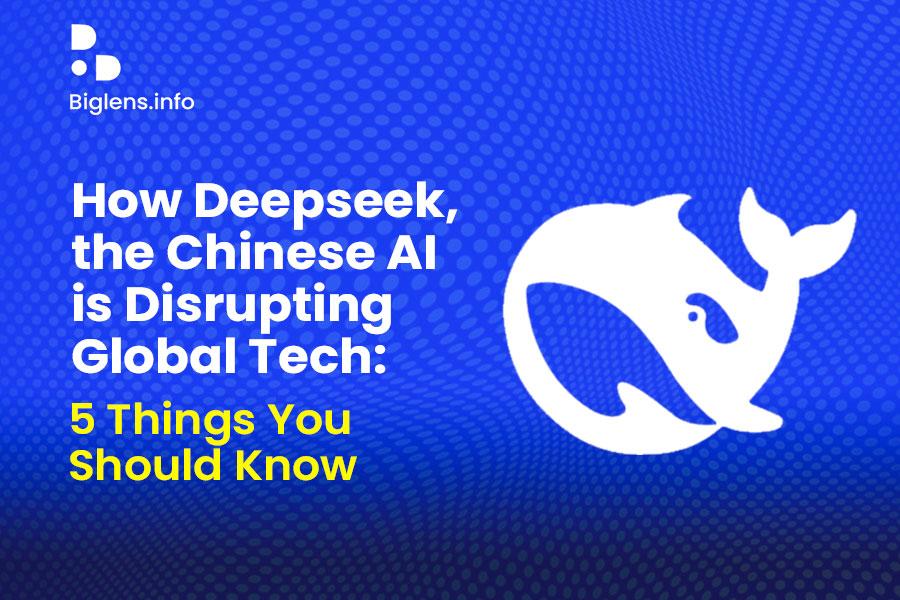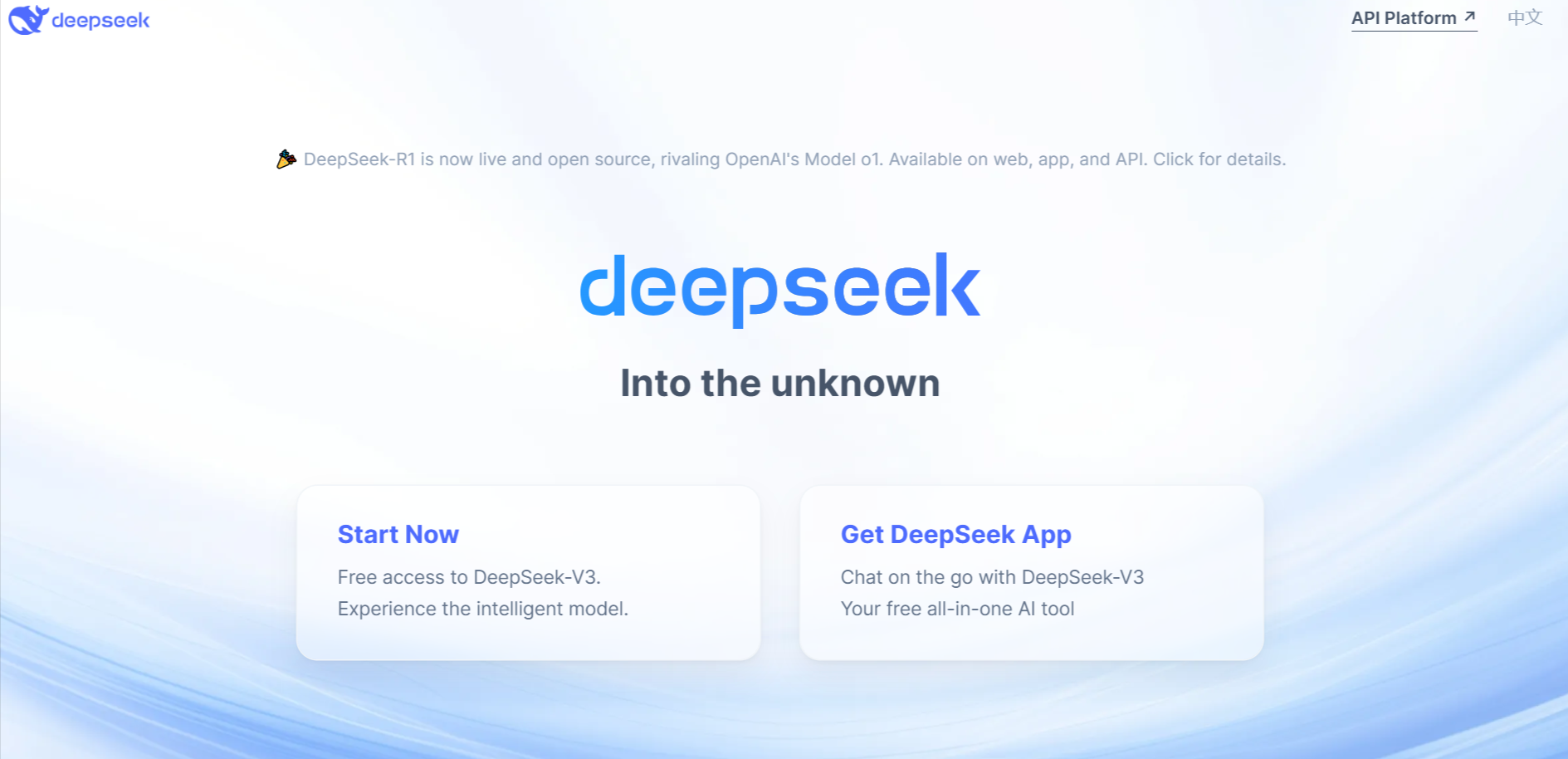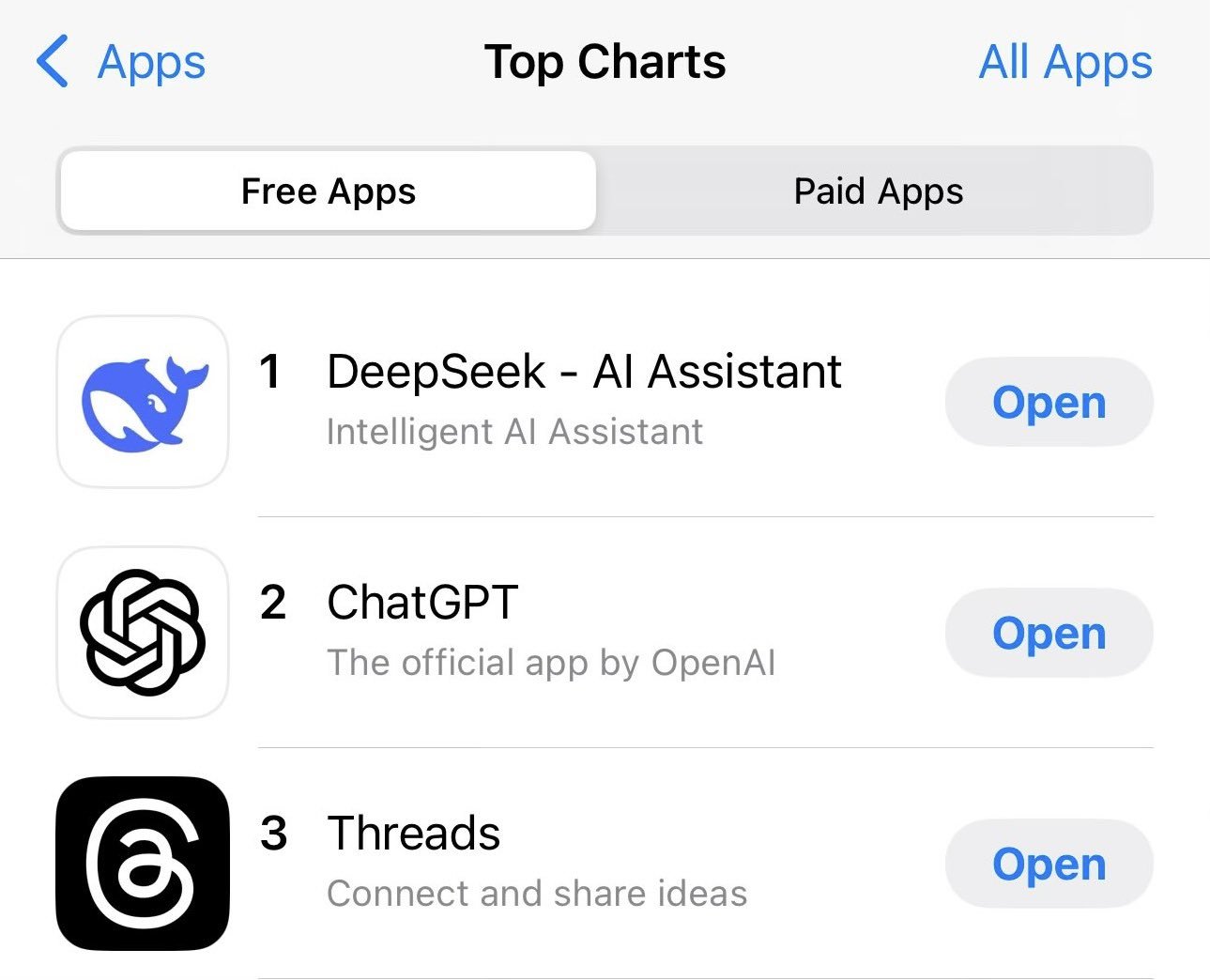Discussions around the recently launched Chinese tech startup Deepseek continue to grow daily. The app is making waves as a strong competitor against the dominant ChatGPT, the leader in AI chatbot technology.
When ChatGPT was launched in 2015, it had never gained such overwhelming attention. However, DeepSeek entered the race and quickly rose to the top of global app rankings on Apple’s App Store and Google Play Store, gaining widespread acceptance and dominance. Five key aspects stand out among several factors that set DeepSeek apart from other AI chatbots.

Founded in late 2023 by CEO Liang Wenfeng, DeepSeek AI, a Chinese AI startup based in Hangzhou, China, has rapidly become a leading AI chatbot, challenging major players like Llama 3, Perplexity, Google, and OpenAI. Despite Liang Wenfeng’s low profile, his innovation reshapes the AI industry and has positioned DeepSeek among the most influential Chinese AI firms.
According to research released last week, the DeepSeek development team revealed that they had spent less than $6 million on computing power to train the model—a fraction of the multibillion-dollar AI budgets of US tech giants like OpenAI and Google, the creators of ChatGPT and Gemini, respectively. This efficiency highlights DeepSeek’s impact on AI advancement and AI technology, setting a new benchmark in AI development.
As of now, DeepSeek has become one of the most downloaded apps on the Apple App Store in both the UK and the US, sending shockwaves across the AI industry. One of the biggest companies affected by its rise is Nvidia, which reportedly lost over $500 billion following DeepSeek’s dominance due to decreased demand for expensive Nvidia chips.
However, the Chinese AI company has also faced security concerns, with some questioning whether it poses a potential cybersecurity threat. Additionally, it has been subjected to malicious attacks to undermine its success.
In this post, I will share everything you need to know about DeepSeek the chinese AI and five things to know about this disruptive new presence.
Table of contents
How DeepSeek, the Chinese AI, is Disrupting Global Tech: 5 Things You Should Know
NVIDIA impact losses & US Tech market
5 Things You Should Know About DeepSeek AI
What is DeepSeek?
The DeepSeek LLM is an AI model that is open source and uses reasoning combined with what the company calls “cold start data.” According to research, this means that instead of crawling through the Internet to source user information, it relies independently on reinforced learning to improve accuracy. It is powered by the open-source DeepSeek V3 model, supposedly developed for just $6M.

The developer highlighted this on its GitHub page. The developers of DeepSeek describe R1 as large-scale reinforcement learning on the base model. “We directly apply reinforcement learning to the base model without relying on supervised fine-tuning as a preliminary step,” it says. This approach allows the model to explore chain-of-thought for solving complex problems. With RL, DeepSeek R1 Zero naturally emerged with numerous powerful and engaging reasoning behaviors.
Based on analyzing a range of combined data sources, DeepSeek’s app has seen 2.6 million downloads and recorded a peak of 7 million daily Google searches. At the same time, its users have grown to an estimated 5-6 million worldwide. An estimated 2.1 million searches for DeepSeek were recorded over the weekend, with at least 1.6 million on Sunday, January 26 alone. This is 12.3% of ChatGPT’s 13 million searches in the same timeframe. This shows a promising future for the app if adequately managed.
Read Also: What are the 7 Best GRC Courses for 2025
Who founded DeepSeek?
The app was founded by CEO Liang Wenfeng, who is based in Hangzhou, a city in southeastern China. The 40-year-old man is an information and electronic engineering graduate who founded the hedge fund that backed DeepSeek. His leadership has propelled DeepSeek to become a major Chinese AI firm.
After the launch of DeepSeek R1 around the beginning of this month, the company boasted of “tremendous performance” that rivals one of OpenAI’s latest AI models for tasks such as debugging, maths, coding, and natural language reasoning.
DeepSeek has been the talk of the world and has been praised by President Donald Trump of the United States of America, who called it a “wake-up call” for the ai companies and tech giant in America. It has also been praised by tech figures, including OpenAI Chief Sam Altman, who called it “an impressive model, particularly around what they’re able to deliver for the price.” He also boasts that OpenAI will enhance its performance in the short run.
Venture capitalist Marc Andreessen described it as a ” ais Sputnik moment” — a reference to the Soviet satellite launch that exposed the yawning technology gap between the United States and its primary geopolitical adversary.
Nvidia also welcomed DeepSeek’s accomplishment, calling it “an excellent AI advancement,” and appeared confident that “significant numbers of Nvidia GPUs and high-performance networking” would still be needed.
“DeepSeek V3’s training costs, while competitive, fall within historical efficiency trends,” Lennart Heim, an associate information scientist at the RAND Corporation, told AFP, referring to R1’s previous iteration.
Various other tech mavens and professionals have attested to its ingenuity and proficiency. Marina Zhang, an associate professor at the University of Technology Sydney, said, “DeepSeek’s ability to rival US models despite limited access to advanced hardware demonstrates that software ingenuity and data efficiency can compensate for hardware constraints.”
Ion Stoica, co-founder and executive chair of AI software company Databricks, told the BBC that DeepSeek’s lower cost could spur more companies to adopt AI in their businesses.
The Chinese AI startup claims its AI system can be trained on 2,000 specialized computer chips compared to an estimated 16,000 for leading AI large language models.
NVIDIA impact losses & US Tech market
According to research, Nvidia, Microsoft, Oracle, and Meta shares were all down on Monday morning ahead of the opening of the US markets. The S&P 500 fell 1.8% in early trading on Monday, while significant tech and AI-related stocks were also down, including Nvidia, which fell more than 10%. Microsoft, Meta, Google parent firm Alphabet, and Amazon were also all down.
The devastating drop emerged as the result of the sudden rise of the Chinese AI DeepSeek, which has leapfrogged the existing infamous leading OpenAI, threatening US dominance in the AI industry, especially if claims that it was developed for a fraction of the cost of rivals like ChatGPT maker openai are valid. This development has pinpointed the future of dynamism in artificial intelligence and is a wake-up call for more challenges among the big tech giants.
What could be more surprising is that since 2021, China has restricted the sale of American designed AI semiconductors, which are needed to power the training of new AI model. DeepSeek’s innovation has caused even more shocking developments in the US market.
However, this may have been a miscalculation, as Chinese startup are now sharing their work more readily, resulting in artificial intelligence models that run on much less computing power.
Read Also: Top 12 Screening Questions for Cybersecurity GRC Role for 2025
5 Things You Should Know About DeepSeek AI
DeepSeek AI has quickly become a dominant force in the AI chatbot industry, challenging some of the most advanced and widely used apps in the United States and beyond. In a short period, this Chinese AI company has disrupted the industry with its cutting-edge AI models, which reportedly rival tech giants like OpenAI in terms of performance, speed, and cost-efficiency.

DeepSeek’s approach—prioritizing both performance and accessibility—has sparked a major shift in the AI industry. It challenges the long-standing belief that powerful AI requires immense resources and should remain exclusive to Silicon Valley tech giants. With growing interest from the United States, DeepSeek is forcing established players to rethink their strategies. Here are five key things you should know about this disruptive new presence:
1. DeepSeek is a Chinese AI Startup
Founded by CEO Liang Wenfeng, DeepSeek is a Chinese AI startup established in 2023. The company quickly gained widespread recognition and dominance for developing high-performing, open-source AI models. DeepSeek’s models are freely available for developers to use and build upon, making them highly influential in the AI chatbot ecosystem. For example, Perplexity AI has integrated DeepSeek R1 into its platform, expanding daily query limits for users. By prioritizing accessibility and collaboration, DeepSeek is reshaping the AI landscape, making advanced AI models both affordable and widely available.
2. DeepSeek-R1 Can Possibly Rival OpenAI’s Performance
According to Jack Clark, co-founder of the AI safety and research company Anthropic, DeepSeek-R1 is significant because it “broadly matches OpenAI’s O1 model on a range of reasoning tasks,” challenging the belief that Western AI companies have a major lead over Chinese ones. DeepSeek-R1 stands out for its ability to perform reasoning, debugging, coding, and mathematical tasks at a level comparable to OpenAI’s models—all while operating at a fraction of the cost. Through reinforcement learning and optimized training methods, DeepSeek has drastically cut computational expenses, reducing costs for users by up to 95%.
3. DeepSeek Recently Launched a Reasoning Model Called R1
DeepSeek-R1 is a groundbreaking AI model designed to enhance complex reasoning capabilities. Unlike conventional AI models, R1 mimics human-like cognitive abilities, including deductive, inductive, and abductive reasoning. Trained using advanced reinforcement learning techniques, Deepseek R1 excels in mathematics, coding, debugging, and problem-solving. Early reports suggest that it can outperform leading AI models, including ChatGPT, in certain reasoning tasks.
4. DeepSeek-R1 Has Disrupted the US Tech Market
In a short time, DeepSeek-R1 has caused significant disruption in the US tech sector. The release of this cost-efficient AI model has raised concerns among industry leaders, causing a sell-off in AI-related stocks. DeepSeek’s open-source approach challenges the dominance of US tech giants, raising questions about future demand and revenue for proprietary AI models. Additionally, DeepSeek has been targeted by large-scale cyberattacks, temporarily limiting new user registrations and highlighting security concerns associated with advanced AI system.
Notably, Nvidia AI researcher Jim Fan commented on X (formerly Twitter): “We are living in a timeline where a non-US company is keeping the original mission of OpenAI alive—truly open, frontier research that empowers all.”
This excellent AI advancement is a critical moment in AI development, sometimes described as AI’s “Sputnik moment,” as China’s DeepSeek challenges the dominance of American AI firms.
5. DeepSeek-R1 Is Open-Source
According to Yann LeCun, Meta’s Chief AI Scientist, “It’s not that China’s AI is ‘surpassing the US,’ but rather that open-source models are surpassing proprietary ones.” Unlike closed-source AI models controlled by major tech corporations, DeepSeek-R1 is completely open-source, making it accessible worldwide to researchers, developers, and AI enthusiasts. By publicly releasing its code and architecture, DeepSeek fosters experimentation, collaboration, and rapid innovation in the AI community.
Summary
It is remarkable to see a Chinese entrepreneur from Hangzhou making waves in the big tech world and competing with Silicon Valley’s tech giants. DeepSeek AI has emerged at the perfect time, and CEO Liang Wenfeng has strategically analyzed other AI applications’ strengths, weaknesses, and vulnerabilities to position his AI model effectively.
However, DeepSeek still faces numerous challenges ahead and must navigate them carefully to remain competitive. Issues such as endless repetition, poor readability, and language inconsistencies—which the development team has already identified—pose significant obstacles. Additionally, cybersecurity threats and potential censorship could jeopardize its long-term success.
Finally, one lingering question remains: Why does DeepSeek, the Chinese ai, avoid certain sensitive topics? For example, when asked about the student-led protests against the Chinese government at Tiananmen Square in 1989, DeepSeek responded, “Sorry, that’s beyond my current scope.”
As the AI industry continues to evolve, the emergence of Chinese AI firms like DeepSeek will undoubtedly shape the future of generative AI, AI-driven quantitative trading, and AI technology on a global scale. With ongoing tensions in US China relations and challenges surrounding computer chips and American designed AI semiconductors, DeepSeek’s model will play a key role in the next chapter of Artificial intelligence development.
Babatunde Qodri is a tech blogger, security analyst, and SEO specialist who writes about flexible working, freelancing, side hustles, and skill development for millennials and Gen Z. He can be reached via: babatundelaitan@gmail.com X – @_BabatundeQodri
